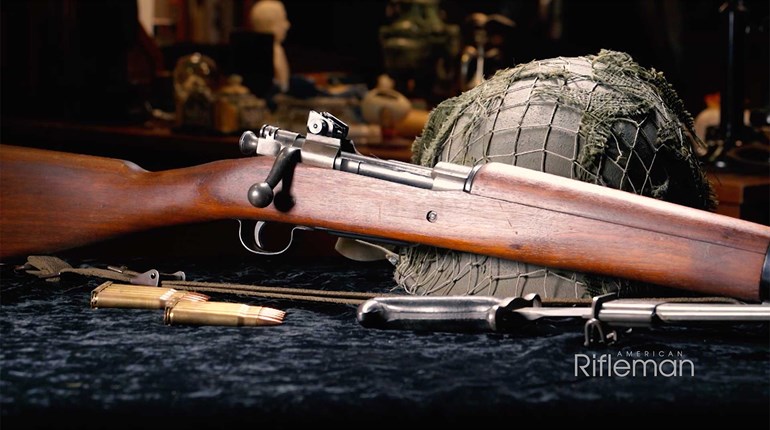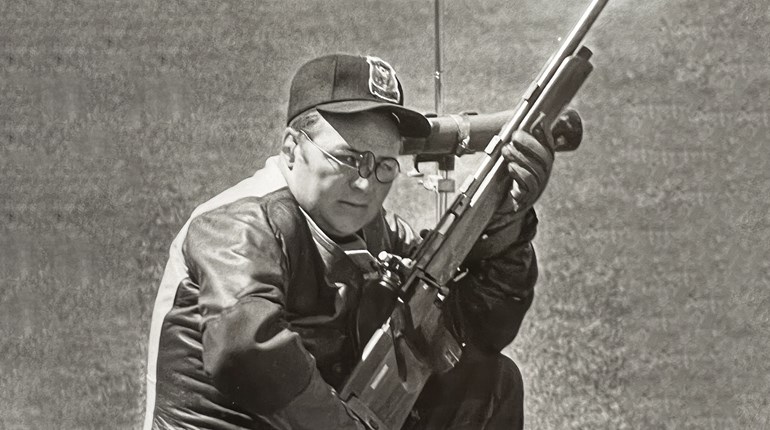
The famous Lewis and Clark Expedition of 1803-1806, also known as the Corps of Discovery, left its jumping-off point, St. Louis, with plenty of firepower: rifles, muskets, shotguns, pistols, two blunderbusses and one swivel gun. All the firearms were single-shot, muzzleloading, black-powder guns with flintlock ignition systems.
All but one, that is. In fact, this most unique gun of the expedition used no gunpowder at all. Rather, it fired bullets by employing compressed air, and was, of all things, a repeater, a concept only the wealthy could enjoy.
The Girandoni air rifle owned by Merriweather Lewis had been invented around 1779 by Bartolomeo Girandoni of Italy, and was used by the Austrian army for 35 years beginning in 1780. No peashooter, the air rifle fired .46-caliber lead balls and was said to be highly accurate and lethal out to 150 yards or more.
The rifle measured 4 feet in length, weighed 10 pounds, and had a tubular magazine positioned along the right side of the barrel that held 22 rounds that could be fired in as little as 30 seconds. The club-shaped metal buttstock of the gun was a detachable (screw-on), compressed-air reservoir capable of firing some 40 shots before losing significant muzzle velocity. However, it took nearly 1,500 strokes with a bicycle-style handpump to fully pressurize the reservoir to 800 psi. Later in the gun’s evolution, wagon-mounted pumps were used to refill the air reservoirs more quickly and easily.
But despite the gun’s quirks, the Girandoni had its advantages during battle. Not only was it capable of firing successive rounds quickly, the soldier firing the weapon from a prone position did not have to stand up to reload, as was the case with muzzleloading firearms. There was also no smoke produced, and although the air rifle was not silent when fired, the sound was much reduced from that of exploding gunpowder.
The Girandoni air rifle was retired from military service with the Austrian army about 1815 for several reasons. Always a delicate weapon, the gun didn’t hold up well under the rigors of military use. For instance, the compressed-air reservoir of the gun was made of hammered sheet iron held together with rivets and sealed by brazing, and even a small hole worn or accidentally punched into the reservoir made it inoperable. Also, the air reservoirs were difficult to manufacture given the techniques of the time, so were always in short supply. Lastly, the gun was so different from other weapons of the era that it required extensive training for soldiers to use proficiently.
Captain Lewis took his Girandoni air rifle along on the expedition more as a novelty than a serious defensive weapon. He was hoping to impress any Native American tribes that the expedition might encounter on its way West with a new technology they had not yet seen. In the journal of the expedition, the air gun is mentioned 39 times. Reserved for unveiling while in council with the Indians, Lewis writes that a demonstration usually “astonished the natives.” So much so, that the tribes thought the air gun possessed magical powers—big medicine—because it produced no smoke and little noise when fired.
Phil Schreier, senior curator of the NRA’s National Firearms Museum in Fairfax, Virginia, goes so far as to call Lewis’ Girandoni air rifle, “The most important historical gun in the entire history of the United States.” Why? He believes it allowed the Corps of Discovery—fewer than 40 men in total—to travel to the Pacific Ocean and back again unopposed by the many native tribes whose braves vastly outnumbered them. “It was basically a parlor trick,” said Schreier. “Achieving peace through the perception of superior firepower.”
Schreier explained that Lewis and Clark pulled off the charade by demonstrating to the Indians the capabilities of just one air rifle—the only one they had—but leading them to believe they had many more just like it; a vast arsenal of superior weapons, secured in their boats if need be. As a result, the three-year expedition was an unmitigated success, the Corps of Discovery traveling thousands of miles essentially unscathed, and doubling the size of America in the process.
Just as today’s modern, smokeless-powder firearms are technologically light-years ahead of yesterday’s blackpowder guns, so are today’s air guns when compared to the Girandoni. But the Girandoni air rifle was the first practical air gun of its kind, so well deserves a place in the history of firearms. And the fact that Lewis and Clark thought enough of the gun to include it in their extensive arsenal makes it that much more special.
No one knows for sure what became of Lewis’ air gun following the expedition, but a Girandoni air rifle that could possibly be his is on display at the NRA National Firearms Museum.







































